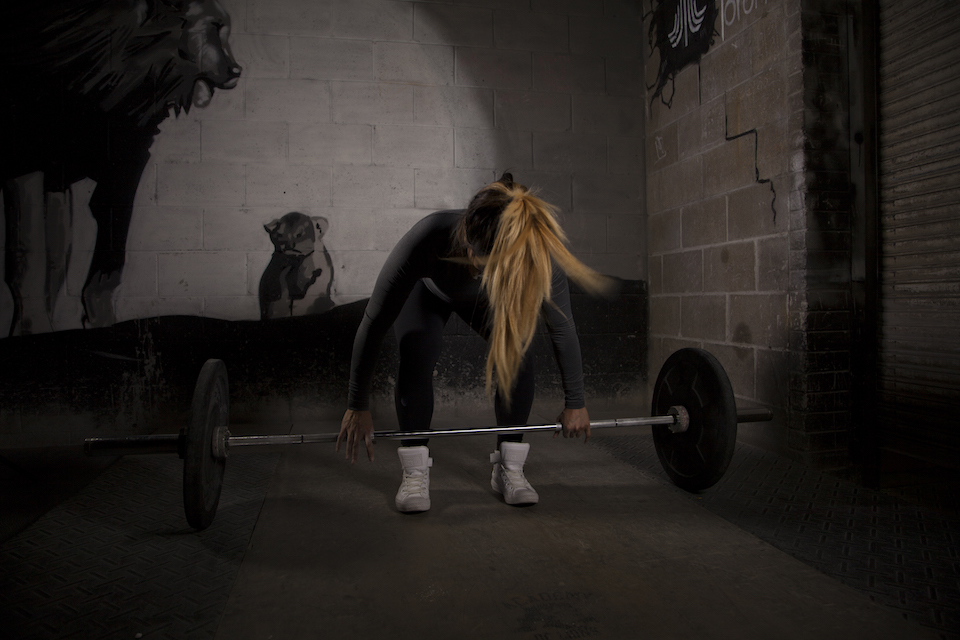I like to think that I know an athlete when I see one: hair pulled back, some sort of oversized duffel bag slung over their shoulder, and proudly sporting sweats. Even though we’ve never met, this is how I recognize Alexandra Kousathana when she walks into the small Second Cup on Harbord and Spadina.
Kousathana is the co-president of the U of T Ironsports club, which she leads along with masters student Stephanie Scodras. I met with both women to discuss how they got involved with the growing sport.
“I’m in Kinesiology, so like everyone in the faculty was… talking about Crossfit, so I tried Crossfit,” said Kousathana. “Then [I] got into Olympic weightlifting, and from there I got into powerlifting.”
Previously unbeknownst to me, weightlifting and powerlifting are not synonymous — as Kousathana is quick to point out. “Weightlifting is the Olympic sport…powerlifting is [three events]: the squat, bench-press, and deadlift. It’s a sport just not an Olympic sport.”
U of T Ironsports was founded by Amanda Santos in 2012 and is the only Olympic weightlifting and powerlifting club on St. George campus. Kousathana and Scodras subsequently became presidents. “Ironsports has a lot of roots in trying to get women into [powerlifting and weightlifting]” said Scodras about the club’s investment in gender inclusivity in the sport which has been previously dominated by men. “It’s something that we both really want,” added Kousathana.
Putting in work
The duo’s goal is to teach the club’s participants the basics of both powerlifting and weightlifting in their practices and training days. They aim to reach out to as many women as possible who might be interested, but are apprehensive about trying the sport. “[IronSports] has a lot of women, Allie and I will usually be at the training days to not just help out the girls, but pretty much help out anyone… sometimes the girls will feel more comfortable in that scenario,” said Scodras, noting that the club can seem intimidating from the outside.
“I think that a lot of people have these sort of misconceptions that girls don’t powerlift,” added Scodras, who can deadlift over 400 lbs. “You’ll see these really little girls who are really strong and it doesn’t really fit the picture that people expect from powerlifters: big, fat, sweaty men.”
They are lifelong athletes who got hooked on the sport in university. They were introduced to lifting through other sports. Kousathana, who grew up in Greece, did not have much access to athletics growing up. “I grew up on an island, so we didn’t have many sports” she said. “The only sport the girls could do was track, because we weren’t allowed to play soccer… there was no women’s soccer.” Scodras was introduced to lifting through her rowing team at McGill, where she completed her undergrad — she hasn’t looked back since. “In the off season they encouraged us to get in the weight room, and I liked it a lot more than everything else.”
Once involved in the sport, both women noticed a lack of female representation in powerlifting. They note that while lifting has garnered increased interest since the popularization of crossfit, there are still fewer competitive weight classes for women in powerlifting and Olympic weightlifting. Fewer women are represented come competition time.
This disparity was evident to Scodras when she was first on a team in Montreal. The team consisted of around a dozen men and two women, herself included. “At my first meet there was definitely a discrepancy in the number of men compared to women [but] when you get to the bigger meets, like provincials… you’ll see a lot more women coming out,” she noted.
“But it’s still not equal,” added Kousathana.
Breaking down barriers
Women are just beginning to make their mark in lifting sports. In the process, female athletes are slowly chipping away at the expectations society has of their bodies. After all, the physique required to become a successful competitor demands a significant amount of muscle. Consequently, Kosathana and Scodras have been subject to extensive scrutiny for not fitting into a certain mould.
Kousathana, who placed third in her weight class at the Canadian Powerlifting Union National Championships, recalls being criticized not for participating in a male dominated sport per se, but for the amount of muscle she gained in order to become a competitive lifter.
“It was just like ‘oh, but you don’t want to get big,’” she said to illustrate the common line she would receive after telling people about her lifting, to which she would respond, “well maybe I do, and that’s fine.”
Kousathana cites Ronda Rousey, UFC bantamweight champion, as a major force in helping to redefine femininity.
“I think it’s feminine to have every muscle in your body to be there for a purpose” she says, “I don’t see why being muscly and being strong isn’t feminine, I consider it to be very feminine.”
It is clear for Kousathana and Scodras that women who powerlift, exhibit robust muscles, and lift more than men were not enigmatic. Rather, they should be celebrated for their athletic successes and the bodies that enable them to achieve their goals — after all, it’s working out well for them.
“I can just eat all the pizza and ice cream I want and I’m fine with it! As long as I’m setting [personal records] it’s fine,” said Scodras.
Both women who — you guessed it — are on their way to the gym after our conversation, humoured me with one final question: if I pick up a weight, I won’t look like Arnold Schwarzenegger all of a sudden?
“No,” Kousathana laughed, “I wish.”
